How to Use Treats for Positive Cat Socialization
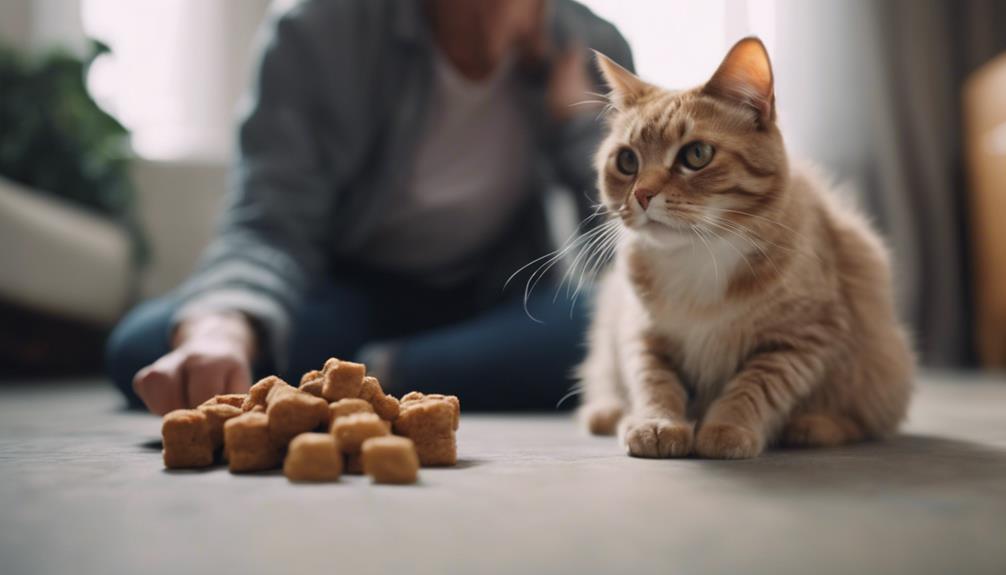
When it comes to socializing your cat, using treats can be a powerful tool.
They can help create positive associations with new experiences, people, or other animals.
Here are some tips and techniques for using treats effectively in your cat's socialization process.
- Start Slow: Begin by offering treats in a calm and quiet environment.
Allow your cat to approach you at their own pace.
- Use High-Value Treats: Find out what treats your cat loves the most and use them as rewards for positive behavior.
This could be freeze-dried chicken, tuna, or a favorite cat treat.
- Pair Treats with Positive Experiences: Give your cat treats when they are engaging in desired behaviors or when they are in the presence of something they may be fearful of.
This will help them associate that thing with something positive.
- Be Consistent: Reward your cat consistently for good behavior to reinforce positive associations.
This will help them understand what behaviors are desirable.
- Keep Sessions Short and Fun: Socialization sessions should be short and enjoyable for your cat.
End on a positive note to keep them looking forward to the next session.
Remember, every cat is unique, so be patient and adjust your approach based on your cat's reactions and comfort levels. With time and positive reinforcement, you can help your cat become more social and comfortable in various situations.
Benefits of Using Treats
Using treats in cat socialization can significantly enhance the bonding experience between cats and their owners. Cats have distinct flavor preferences, and by using treats that align with these preferences, owners can create a positive association during training sessions. It's essential to consider the cat's individual tastes when selecting treats to ensure the highest level of motivation and engagement.
Training duration is a crucial factor to keep in mind when utilizing treats for cat socialization. Short, frequent training sessions tend to be more effective than long, drawn-out ones. Cats have shorter attention spans compared to dogs, so keeping sessions brief helps maintain their focus and interest. By incorporating treats strategically throughout the training process, owners can reinforce positive behaviors and strengthen the bond with their feline companions.
Choosing the Right Treats

When selecting treats for cat socialization, it's crucial to consider the size of the treat, ensuring it's small enough for quick consumption.
Additionally, the quality of ingredients used in the treats plays a significant role in their appeal to cats.
Treat Size Matters
Selecting the appropriate treat size is crucial for effective cat socialization. When choosing treats, consider the treat frequency, variety, timing, and consistency. Treats should be small, bite-sized pieces to prevent overfeeding and maintain the cat's interest during socialization sessions. Smaller treats are ideal for frequent positive reinforcement without disrupting the cat's regular diet.
Varying treat sizes can also add excitement and engagement during training. Additionally, offering treats at consistent intervals helps establish a routine and reinforces positive behaviors. Remember, the goal is to use treats strategically to encourage desired social interactions, so choosing the right treat size plays a significant role in the success of cat socialization efforts.
Ingredient Quality Importance
For optimal cat socialization outcomes, it's essential to prioritize the quality of ingredients when selecting treats. Treat texture preferences play a significant role in your cat's enjoyment, so choose treats with textures that align with your cat's preferences.
Additionally, ingredient sourcing standards are crucial; opt for treats made with high-quality, responsibly sourced ingredients to ensure your cat receives the best. Flavor variety is also important to keep your cat interested and engaged during socialization sessions.
Lastly, maintaining nutritional balance is key. Look for treats that not only taste good but also provide essential nutrients to support your cat's overall health. By considering these factors, you can select treats that promote positive socialization experiences for your feline friend.
Setting Up Treat Sessions
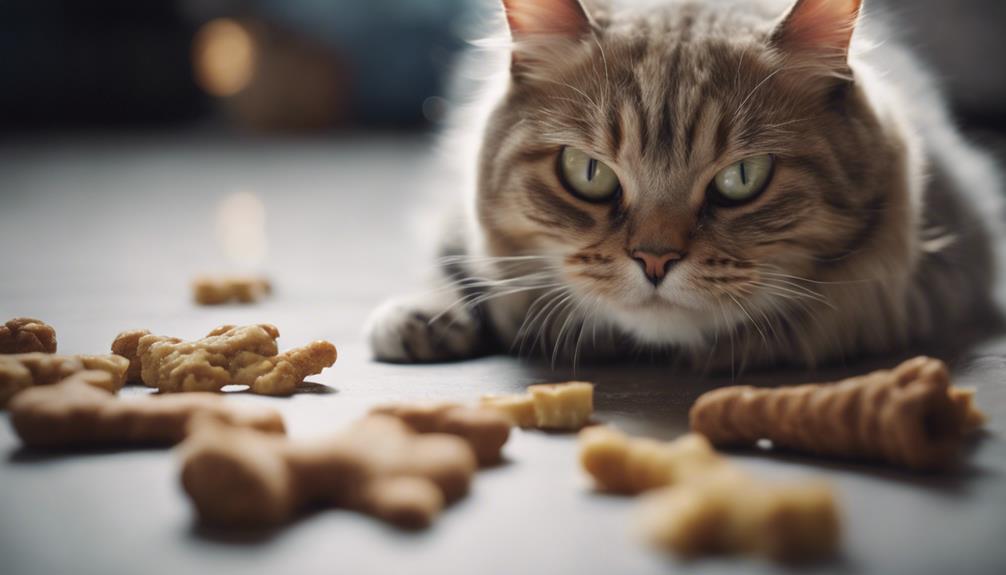
To initiate treat sessions effectively, establish a calm environment and position yourself at your cat's eye level. This approach helps create a positive atmosphere for your cat, enabling effective communication and bonding. When setting up treat sessions, consider the following strategies:
| Treat Motivation | Socialization Strategies |
|---|---|
| Use high-quality treats made with real meat or fish. | Start with brief sessions to prevent overwhelming your cat. |
| Experiment with different treat textures and flavors. | Encourage your cat to approach you by placing treats nearby. |
| Keep treats small to avoid overfeeding. | Use treats to reward desirable behaviors during socialization. |
| Rotate treats to maintain interest and motivation. | Gradually increase the duration of sessions as your cat becomes more comfortable. |
Positive Reinforcement Techniques
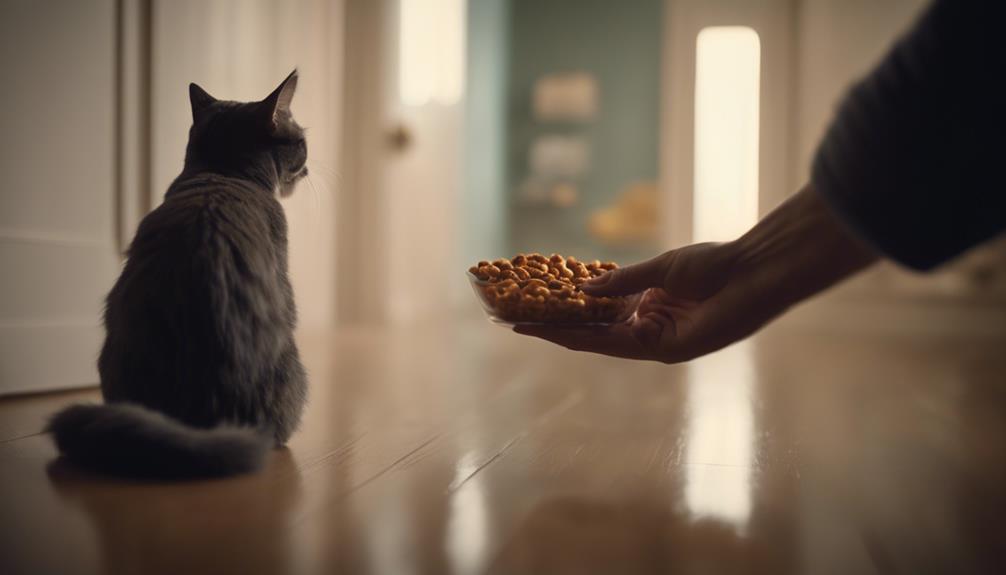
When implementing positive reinforcement techniques for cat socialization, start by identifying your cat's favorite treats to use as rewards. Cats respond well to positive reinforcement, making it an effective method for behavior modification. Clicker training can be a useful tool in conjunction with treats. The clicker serves as a signal to your cat that they've performed the desired behavior correctly, followed by a tasty treat as a reward.
Play therapy is another effective positive reinforcement technique for cat socialization. Engaging in interactive play sessions helps build trust and strengthen the bond between you and your cat. Desensitization techniques can also be incorporated into the socialization process. By gradually exposing your cat to new people, animals, or environments while offering rewards, you can help reduce fear and anxiety.
Consistency and patience are key when using positive reinforcement techniques. By creating a positive association with social interactions through treats and other rewards, you can help your cat feel more comfortable and confident in various situations.
Addressing Fear and Anxiety
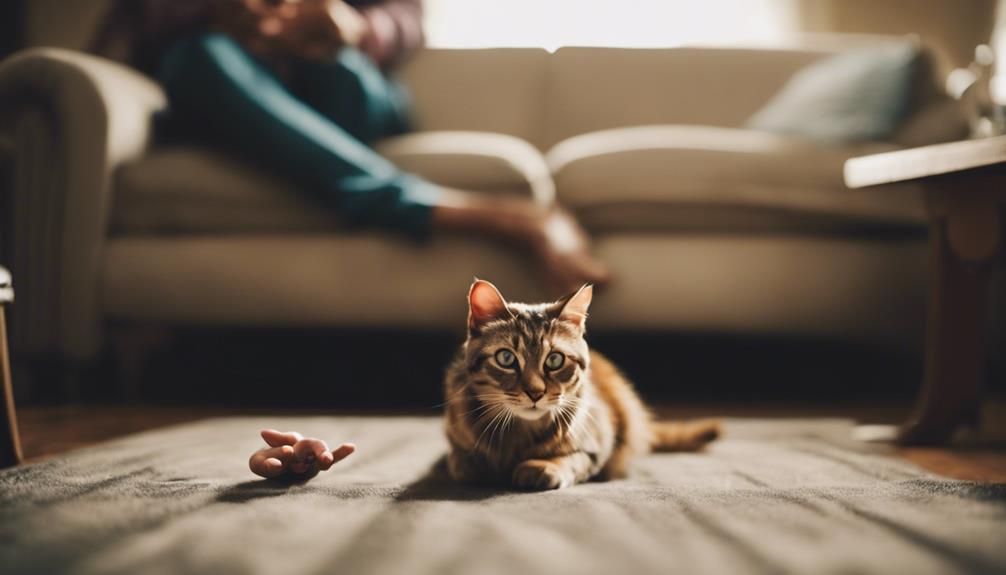
Cats can exhibit fearful behavior due to various triggers that cause anxiety. Understanding these triggers is crucial in addressing fear and anxiety in cats.
Fearful Cat Behavior
In navigating fearful cat behavior, owners should prioritize creating a calm and secure environment to help alleviate their feline companion's anxiety. To address fear and anxiety in cats effectively, consider the following:
- Implement calming techniques such as soothing music or pheromone diffusers.
- Use gradual exposure to fear-inducing stimuli to help your cat acclimate slowly.
- Engage in confidence-building activities like interactive play sessions or clicker training.
- Practice trust exercises by offering treats or engaging in gentle petting to create positive associations.
Anxiety Triggers in Cats
Navigating anxiety triggers in cats requires a keen understanding of their unique sensitivities and environmental stressors. Cat behavior can be influenced by various stressors, such as changes in routine, loud noises, unfamiliar scents, or new surroundings.
Recognizing these triggers is crucial for effective stress management. It's essential to create a safe and calming environment for cats, providing hiding spots, comfortable resting areas, and interactive toys to alleviate anxiety. Additionally, establishing a consistent routine and offering gentle reassurance can help cats feel secure and reduce their stress levels.
Handling Treat Time Challenges
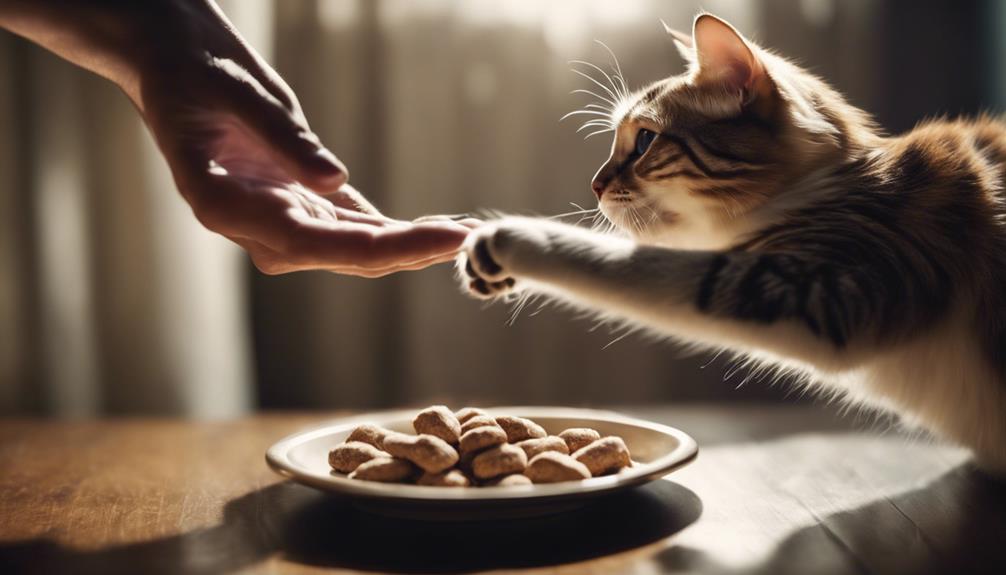
When facing challenges during treat time with your cat, consistency in your approach can help establish positive associations. It's important to address difficulties with patience and a proactive mindset.
Here are some strategies to help you navigate treat time challenges effectively:
- Time Management: Set aside specific times for treat sessions to create a routine that your cat can anticipate.
- Distraction Techniques: If your cat is easily distracted or uninterested, try engaging them with interactive toys before offering treats.
- Consistency: Stick to a regular schedule for treat time to reinforce positive behaviors.
- Patience: Remember that every cat is unique, and it may take time for them to adjust to treat time routines.
Monitoring Progress and Adjusting
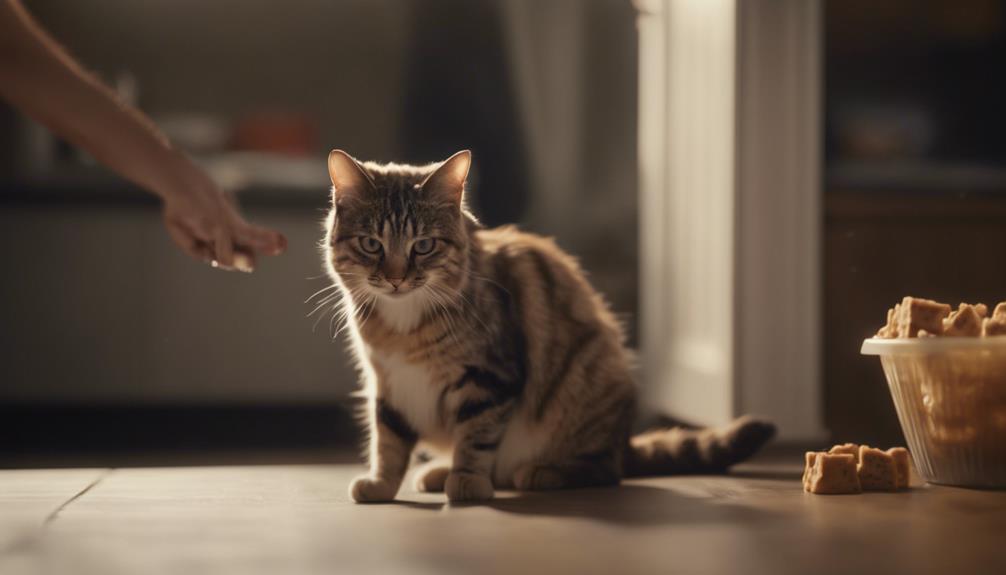
As you observe your cat's response to treat time strategies, it's crucial to monitor progress and make adjustments accordingly for effective socialization. Tracking results is essential to gauge the impact of your efforts. Keep a record of how your cat reacts to different treats, interactions, and socialization attempts. Note any improvements or setbacks in their behavior to inform your next steps accurately.
Behavior modification is a key aspect of cat socialization. By monitoring your cat's progress closely, you can identify patterns and tailor your approach to suit their needs. If a particular treat or socialization technique isn't yielding the desired results, be prepared to adjust your methods. This flexibility is crucial in helping your cat feel comfortable and secure in social situations.
Frequently Asked Questions
Can I Use Treats for Positive Socialization With Multiple Cats at the Same Time?
When socializing multiple cats at once, understanding group dynamics is key. Treat distribution should be equitable to prevent jealousy and encourage positive interactions. Consistent reinforcement with treats can help foster a harmonious environment among the feline group.
How Do I Know if My Cat Is Allergic to a Certain Type of Treat?
To determine if a cat is allergic to a certain treat, observe for symptoms like itching, vomiting, or diarrhea. Allergy testing can help pinpoint triggers. Treat rotation and ingredient analysis can aid in identifying and substituting problematic treats.
Is It Possible to Overuse Treats During Socialization Sessions?
Overusing treats during socialization sessions can hinder progress. Moderation is key. Varying treats keeps the cat engaged. Positive reinforcement techniques are effective for training. Balancing treat rewards with other forms of encouragement is essential for successful cat socialization.
Can Treats Be Used to Help Socialize a Shy or Timid Cat?
Tempting treats tactfully tend to turn timid tabbies toward trust. Behavioral modification through treat-based interactions can aid in trust building with shy cats, fostering positive socialization experiences and strengthening the human-feline bond.
Are There Any Alternative Methods to Using Treats for Positive Cat Socialization?
Alternative methods for positive cat socialization include clicker training and play therapy. These techniques can help build trust and confidence in shy or timid cats. By engaging in interactive activities, cats can learn to socialize in a fun and rewarding way.











